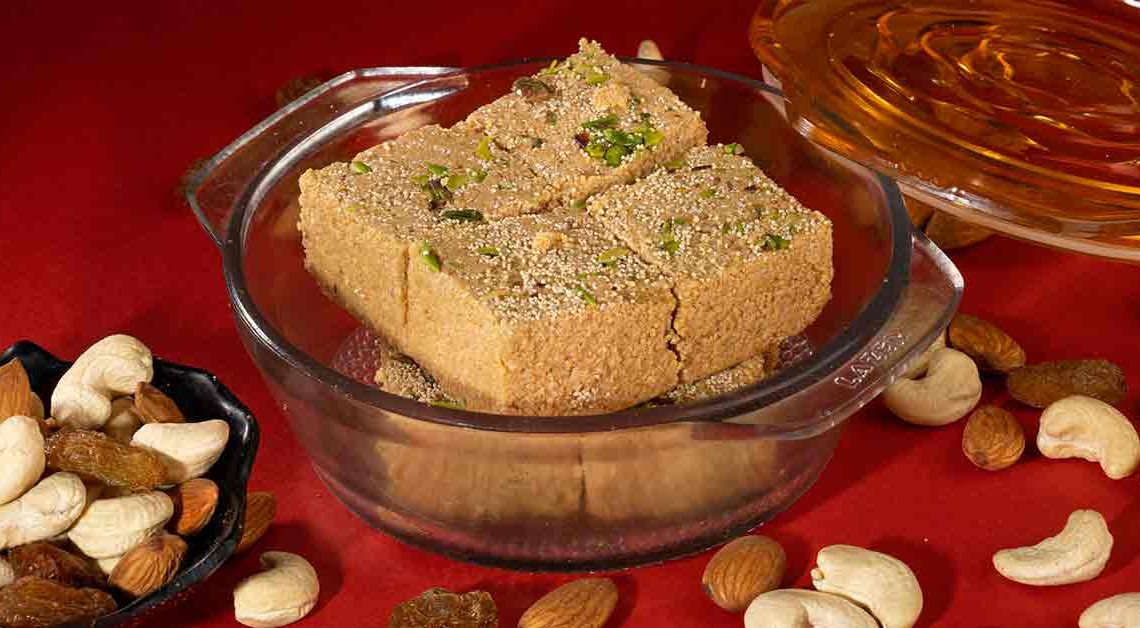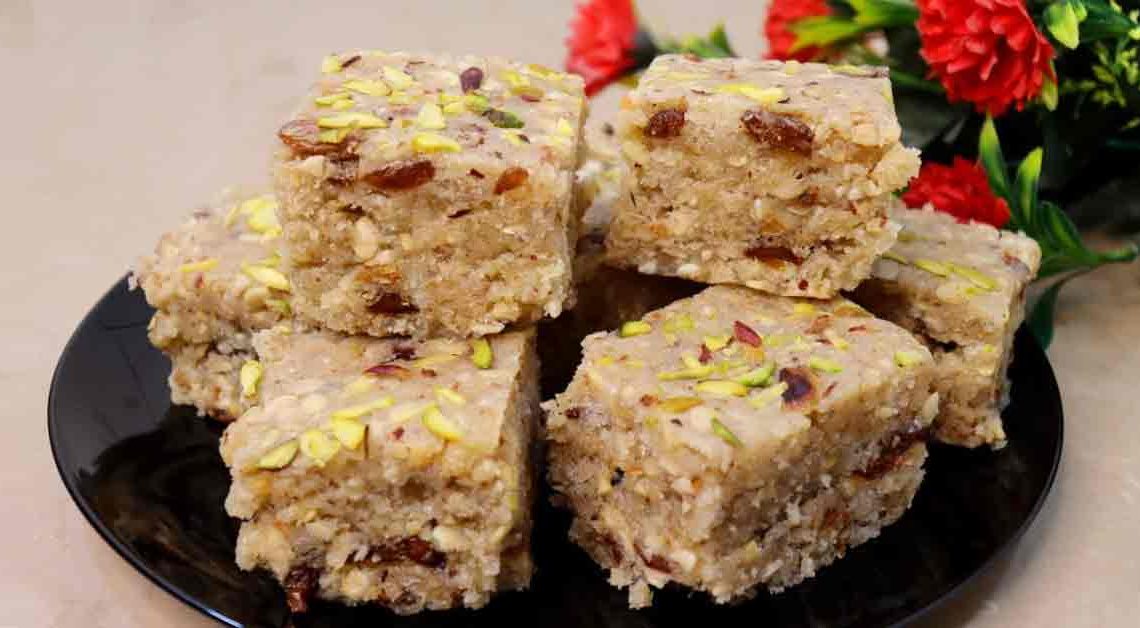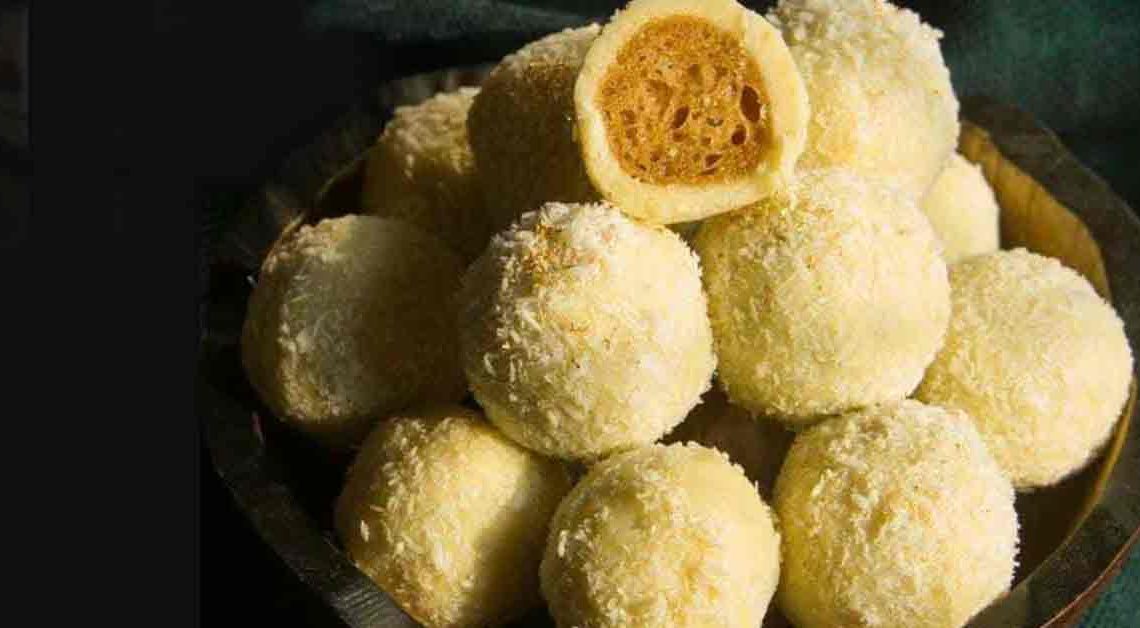Gajak Fusion: The Unique Twist of Khas Khas in Barfi Bliss

Welcome to a culinary journey on Mithainama that promises to tantalize your taste buds and transport you to the heart of traditional Indian sweets. Today, we embark on a delectable adventure with a sweet treat that encapsulates the essence of heritage and flavor – Khas Khas Barfi Gajak.
Picture this: a velvety blend of poppy seeds and rich khoya, lovingly crafted into bite-sized squares that melt in your mouth. This exquisite confectionery marries the nutty crunch of poppy seeds with the creamy sweetness of khoya, creating a symphony of textures that is nothing short of divine.
But what sets this Khas Khas Barfi Gajak apart? It’s not just a dessert; it’s a celebration of cultural heritage and time-honored culinary techniques. As you sink your teeth into each square, you’ll experience the culinary prowess passed down through generations, bringing the warmth of traditional Indian kitchens to your palate.
Get ready to indulge in a sweet symphony that honors the past while satisfying your present cravings – this is a journey your taste buds won’t want to miss!
Origin of Khas Khas Barfi Gajak
The origins can be traced back to the rich tapestry of Indian culinary traditions, where each bite tells a story of heritage and craftsmanship. This delightful sweet has its roots in the heartland of India, where centuries-old recipes and techniques have been lovingly passed down through generations.
The key ingredient, khas khas or poppy seeds, has been a staple in Indian cuisine for centuries. Its use in sweets dates back to ancient times, with poppy seeds prized for their unique texture and nutty flavor. As trade routes expanded and cultures intermingled, this humble seed found its way into the kitchens of diverse regions, giving birth to a variety of regional delicacies.
The art of crafting Barfi, a traditional Indian sweet, involves simmering khoya to a rich, fudgy consistency. The addition of khas khas introduces a delightful crunch, elevating the texture and flavor profile of the Barfi. Gajak, a sweet made from sesame seeds and jaggery, adds another layer of complexity, creating a symphony of tastes that dance on the palate.
History of Khas Khas Barfi Gajak
The history is deeply intertwined with the cultural and culinary tapestry of India, reflecting a journey through time that spans centuries. While the exact origins may be challenging to pinpoint, the components of this delectable treat can be traced back to ancient Indian culinary practices.
The evolution likely occurred as culinary traditions intermingled over the centuries. Regional variations and adaptations would have contributed to the unique combination of poppy seeds, khoya, and the concept of gajak in a single sweet dish.
Over time, this delightful creation became a part of festive celebrations, weddings, and special occasions, further embedding itself in the cultural fabric of India. The preparation and enjoyment continue to be a cherished tradition, representing the timeless artistry of Indian sweets and the culinary expertise passed down through generations.
Cultural Significance
It holds significant cultural importance in India, transcending its status as a mere dessert to become a symbol of tradition, celebration, and the shared heritage of diverse communities. Here are several aspects that contribute to the cultural significance of indian sweet:
Festive Celebrations: This delectable sweet is often associated with festive occasions such as Diwali, weddings, and religious celebrations. Its presence on the dessert table adds a touch of indulgence and joy to these special moments, signifying abundance and the sweetness of life.
Culinary Heritage: It is a testament to the rich culinary heritage of India. Its ingredients, preparation methods, and regional variations connect the present to the past, reflecting the time-honored traditions of Indian sweets.
Symbol of Prosperity: Sweets, in Indian culture, are often associated with auspiciousness and prosperity. Offering or sharing is a gesture of goodwill and symbolizes the wish for sweetness and abundance in the lives of others.
Where is Khas Khas Barfi Gajak Famous?
Khas Khas Gajak is primarily famous and enjoyed in various regions across India. Here are some regions where it is particularly famous:
North India: It is commonly enjoyed in the northern parts of India, where gajak, made from sesame seeds and jaggery, is a traditional sweet. The addition of poppy seeds and khoya to create a Barfi variation adds a unique twist to the traditional flavors of the region.
Rajasthan: Rajasthan is known for its rich culinary heritage, and the state has a deep connection with gajak and has gained popularity in Rajasthan, where gajak is a popular sweet during winter months. The infusion of poppy seeds and khoya in the Barfi version adds to the festive spirit.
Uttar Pradesh: Uttar Pradesh, with its diverse range of sweets, is likely to embrace the unique combination of poppy seeds and khoya in Barfi. The state’s love for traditional sweets and the influence of regional culinary variations contribute to the popularity of Khas Khas Gajak.
Interesting Facts and Trivia
Khas Khas Gajak is a delectable Indian sweet with a rich history and cultural significance. Here are some interesting facts and trivia related to it:
- Poppy seeds, known as khas khas, have a long history in ancient civilizations. They were not only used in culinary applications but also valued for their medicinal properties. In Indian Ayurveda, poppy seeds were believed to have calming and pain-relieving effects.
- Poppy seeds are a good source of essential nutrients, including dietary fiber, vitamins, and minerals. Incorporating them into it not only adds flavor and texture but also contributes to the nutritional profile of the sweet.
- Gajak, a key component of gajak, is often associated with winter months in northern India. Its preparation and consumption peak during the winter season, providing a sweet and energy-rich treat to combat the cold.
- It is a popular choice for festive gifting. Families often exchange boxes of this sweet treat during celebrations, emphasizing the spirit of sharing and spreading joy.
- Poppy seeds are known for their mild sedative properties. Including them in your diet may contribute to a sense of relaxation and well-being.
Did You Know?
Khas Khas Barfi Gajak isn’t just a delightful treat for your taste buds – it comes with a range of health benefits too! Here’s why indulging in it can be a guilt-free pleasure:
- The inclusion of poppy seeds in gajak brings a burst of essential nutrients. Poppy seeds are a good source of dietary fiber, vitamins, and minerals, contributing to overall well-being.
- With khoya providing a dense and energy-rich base, it serves as a quick and convenient snack, especially during festive seasons or when you need an energy boost.
- Poppy seeds contain antioxidants that help combat oxidative stress in the body. Including them in your diet, as it may contribute to the overall antioxidant defense system.
- Khoya, a key ingredient in the sweet, is made by reducing milk to a fudgy consistency. This process retains the calcium content, promoting bone health and strength.
- Poppy seeds are a good source of iron, a vital component for maintaining healthy blood and preventing iron deficiency. Enjoying gajak can be a delicious way to incorporate iron into your diet.







